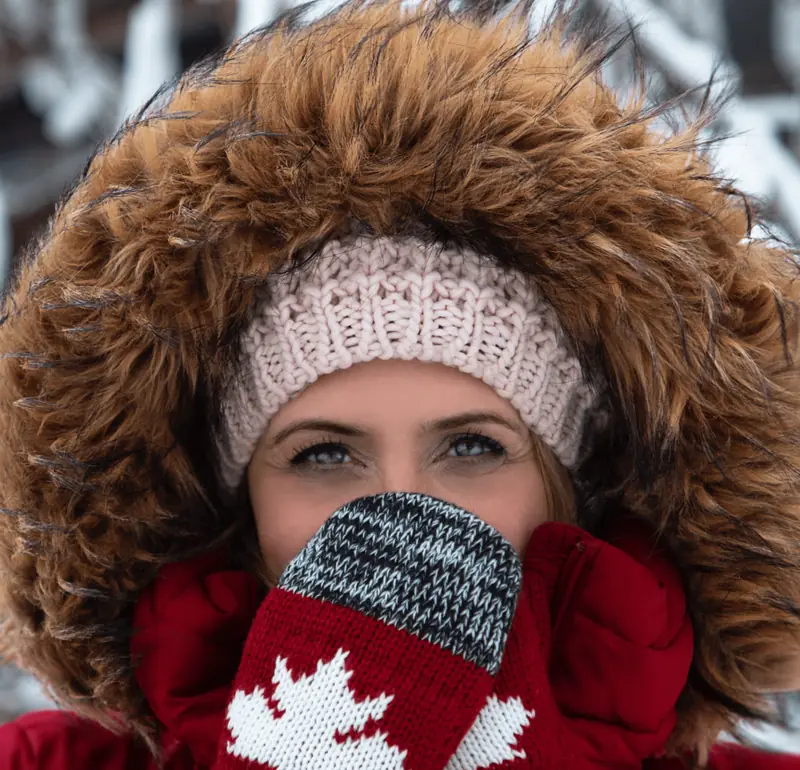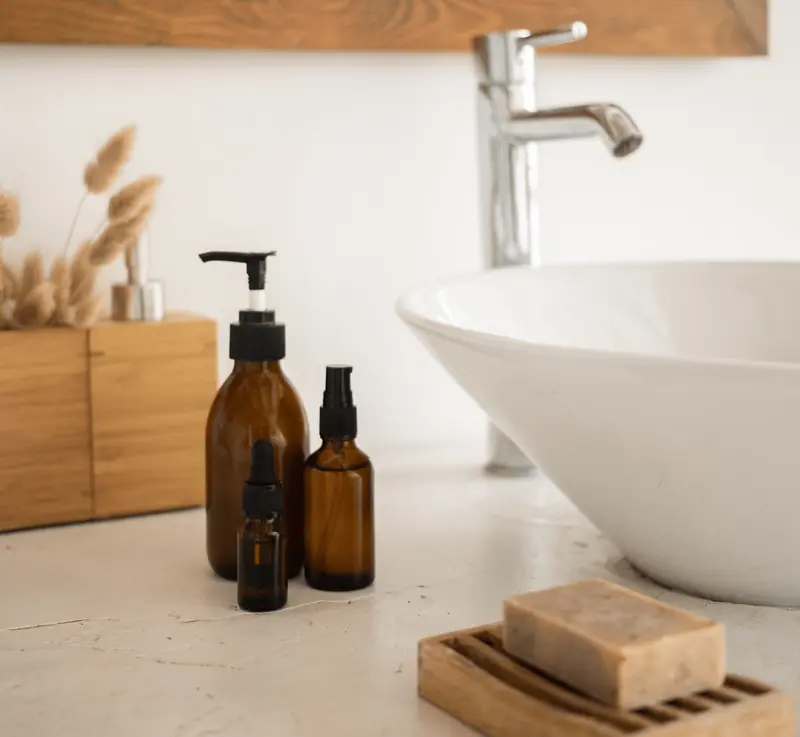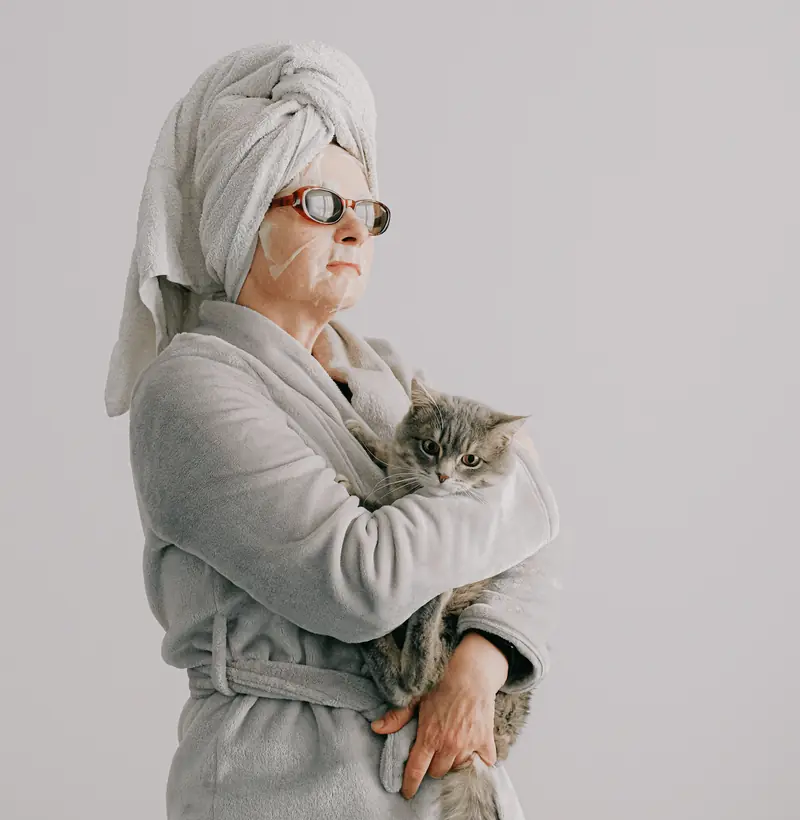
HouseWife shares insights on cosmetic culinary arts, skin nutrition, anti-wrinkle masks, eye exercises, and maintaining facial muscle tone.
How to Protect Your Skin in the Cold: Precautions
Exposed areas of the body react to low temperatures and wind with loss of elasticity, redness, bruising, and flaking skin. Cold weather causes blood vessels to constrict, disrupting circulation in the tissues. This leads to decreased function of the sebaceous glands and dry skin. The dermis loses moisture due to the effects of wind, cold, and dry air in heated indoor spaces.
What to do:
- For frostbite first aid, drink warm fluids and apply an insulating bandage: warm up and rub frostbitten fingers, cheeks, nose, and ears with panthenol or petroleum jelly, then wrap them in a scarf;
- Massage your face to improve circulation and apply a thick layer of cream to prominent areas before spending extended time in the cold;
- In strong winds, soften your skin with almond oil;
- In the morning and at night, nourish your skin with a rich cream;
- Due to increased skin sensitivity in the cold, avoid facial peels and scrubs during winter;
- Use lip balm to prevent chapped lips;
- Replace antibacterial cleansers with soap that has a higher glycerin content;
- Avoid aggressive gels and hot baths in winter (paradoxically): hot water dries out the skin;
- Keep your hands in your pockets and wear gloves to prevent skin from drying out;
- Use a humidifier in winter, as heating systems and radiators can dry out the air.

Being Cold is Not Attractive
Unlike a healthy blush on your cheeks, a red nose from the cold can create a cosmetic issue, especially if it doesn’t fade over time. Cheeks and noses are constantly exposed to the elements, and cold and wind can create a network of blood vessels on these areas of skin. The condition of blood vessels that have lost elasticity is known as couperose. Persistent redness occurs due to disrupted circulation and the expansion of subcutaneous capillaries (small blood vessels).
Sensitive skin and hormonal imbalances contribute to couperose manifestations on the face, and frostbite can be a triggering factor (along with harmful habits that weaken blood vessels and poor nutrition). The appearance of the vascular network typically affects people who have to work outdoors in winter and summer. A lack of silicon in the body is often the starting point for the loss of elasticity in capillaries, as this element is responsible for the constriction and dilation of blood vessels.
What to do:
- Consume foods rich in silicon: oatmeal, buckwheat, corn, peas, beans, and Jerusalem artichoke;
- For better blood vessel health, choose foods high in vitamins C, K, and P;
- Reduce your intake of fatty foods: cheese, liver, sour cream;
- Avoid excessive spicy seasonings, canned foods, and coffee;
- Quit smoking and drinking alcohol;
- Do not use cosmetics containing alcohol or acetone;
- Do not exfoliate the skin with scrubs if you have couperose;
- If you have high blood pressure, normalize it and increase your physical activity;
- Avoid extreme temperatures: saunas, hot baths, scorching sun, and frost are not for you;
- A mask made from potato starch and sea buckthorn (you can substitute this berry with cranberry, raspberry, or strawberry) helps with facial redness: take a teaspoon of each component, mix, mash, and apply to clean skin, then rinse off with cooled tea or water after half an hour;
- Steep four tablespoons of chamomile in a glass of boiling water, let it cool, strain, and apply a cloth soaked in the infusion to the red area for 15 minutes every evening;
- Grate a raw potato and apply it to your face, rinsing off with chamomile infusion after 20 minutes;
- In freezing weather, apply oil to your hands at night (sleep in cotton gloves), and soften dry skin on your elbows with grated cheese or boiled potatoes mixed with honey.

Wrinkle Remedies
Cold stress reveals wrinkles, so winter facial care includes masks that enhance skin elasticity and combat sagging. These skincare products are made for single use and are rinsed off with water without soap.
Bean Mask
If you have dry skin, you won’t get through winter without a nourishing bean mask that smooths out wrinkles. Soak a quarter cup of beans in cold water for a couple of hours, then boil until soft. Mash the cooked beans into a paste, add melted butter, and apply to your face for 15 minutes.
Sour Cream and Yeast
Active ingredients tighten mature skin and reduce wrinkles. Mix a tablespoon each of sour cream and mint tincture with a teaspoon of olive oil, half a teaspoon of ground oatmeal, and a gram of yeast. Stir all the ingredients until you achieve a liquid sour cream consistency and apply the mask to your face for 20 minutes twice a week for two months.
Egg Yolk Mask
For skin firmness, beat an egg yolk with half a teaspoon of buckwheat honey, add five drops each of lemon juice and olive oil, and thicken with ground oatmeal. Apply the mixture to your face for 20 minutes and rinse with cold water.
Cottage Cheese Mask
Mix a teaspoon each of cream or fatty cottage cheese, olive oil, and warmed honey, mash, and add a tablespoon of boiled milk. Apply the mask warm for 15 minutes.
Bread Mask
Warm five tablespoons of oil in a water bath, dip bread crumbs into it, and apply to the skin around your eyes for 20 minutes.
Honey Mask
To reduce wrinkles between the eyebrows and at the outer corners of the eyes, mix two tablespoons each of water and alcohol with 50 grams of honey and apply the mask to the problem areas for 15 minutes, then rinse off.
Eye Exercises
Strengthen facial muscles with these exercises:
– Place two fingers parallel to the eye line on the frown line and frown (repeat 50 times, five times a day);
– Close your eyes and slowly open them, counting to five without raising your eyebrows (this strengthens the eye muscles and tightens the skin around them).
Nutrition for Radiance
Errors in skincare, harmful habits, lack of sleep, low-calorie diets, and cold weather harm skin elasticity and healthy complexion: the face becomes dull. You can improve skin condition from the inside out with proper nutrition.
Water
Since metabolic processes occur in a watery environment, skin condition deteriorates due to a lack of moisture. To prevent wrinkles, you should drink five glasses of clean water a day. Tea and coffee cannot replace water: at the very least, caffeine dehydrates the body.
